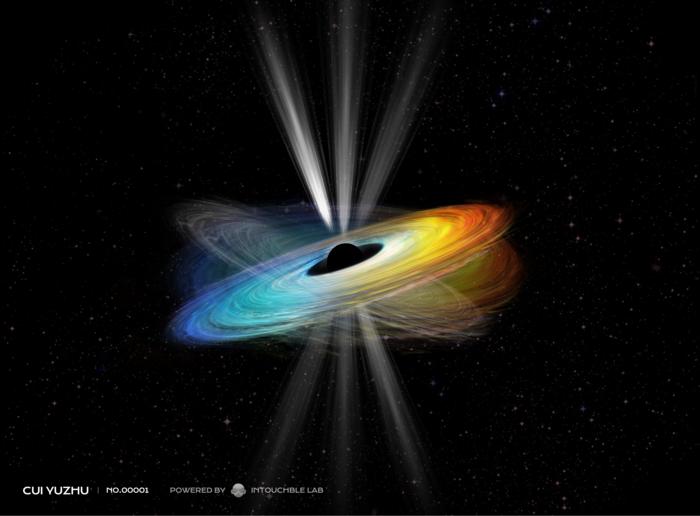| Sep 27, 2023 |
New proof for black hole spin
|
|
(Nanowerk News) The supermassive black hole at the heart of galaxy M87, made famous by the first picture of a black hole shadow, has yielded another first: the jet shooting out from the black hole has been confirmed to wobble, providing direct proof that the black hole is spinning.
|
|
Super massive black holes, monsters up to billions of times heavier than the Sun that eat everything around them including light, are difficult to study because no information can escape from within. Theoretically, there are very few properties that we can even hope to measure. One property that might possibly be observed is spin, but due to the difficulties involved there have been no direct observations of black hole spin.
|
|
Searching for evidence for black hole spin, an international team analyzed over two decades of observational data for the galaxy M87. This galaxy located 55 million light-years away in the direction of the constellation Virgo harbors a black hole 6.5 billion times more massive than the Sun, the same black hole which yielded the first image of a black hole shadow by the Event Horizon Telescope (EHT) in 2019. The supermassive black hole in M87 is known to have an accretion disk, which feeds matter into the black hole, and a jet, in which matter is ejected from near the black hole at close to the speed of light.
|
 |
| Schematic representation of the tilted accretion disk model. The black hole spin axis is assumed to be straight up and down in this illustration. The jet direction points almost perpendicular to the disk plane. The misalignment between the black hole spin axis and disk rotation axis triggers the precession of the disk and jet. (Image: Yuzhu Cui et al. (2023), Intouchable Lab@Openverse and Zhejiang Lab)
|
|
The team analyzed data for 170 time frames collected by the East Asian VLBI Network (EAVN), the Very Long Baseline Array (VLBA), the joint array of KVN and VERA (KaVA), and the East Asia to Italy Nearly Global (EATING) VLBI network. In total, more than 20 radio telescopes across the globe contributed to this study.
|
|
The results show that gravitational interactions between the accretion disk and the black hole’s spin cause the base of the jet to wobble, or precess, much the same way that gravitational interactions within the Solar System cause the Earth to precess. The team successfully linked the dynamics of the jet with the central supermassive black hole, providing direct evidence that the black hole does in fact spin. The jet’s direction changes by about 10 degrees with a precession period of 11 years, matching theoretical supercomputer simulations conducted by ATERUI II at the National Astronomical Observatory of Japan (NAOJ).
|
|
"We are thrilled by this significant finding," says Yuzhu Cui, lead author on the paper in Nature ("Precessing jet nozzle connecting to a spinning black hole in M87"), summarizing the research she started as a graduate student at NAOJ before moving to Zhejiang Lab as a postdoctoral researcher. "Since the misalignment between the black hole and the disk is relatively small and the precession period is around 11 years, accumulating high-resolution data tracing M87 structure over two decades and thorough analysis are essential to obtain this achievement.”
|
|
"After the success of black hole imaging in this galaxy with the EHT, whether this black hole is spinning or not has been a central concern among scientists," explains Dr. Kazuhiro Hada from NAOJ. "Now anticipation has turned into certainty. This monster black hole is indeed spinning."
|
|
“This is an exciting scientific milestone that was finally revealed through years of joint observations by the international researchers team from 45 institutions around the world, working together as one,” says Dr. Motoki Kino at Kogakuin University, the coordinator of the East Asian VLBI Network Active Galactic Nuclei Science Working Group. “Our observational data beautifully fitted to the simple sinusoidal curve bring us new advances in our understanding of black hole and jet system.”
|

